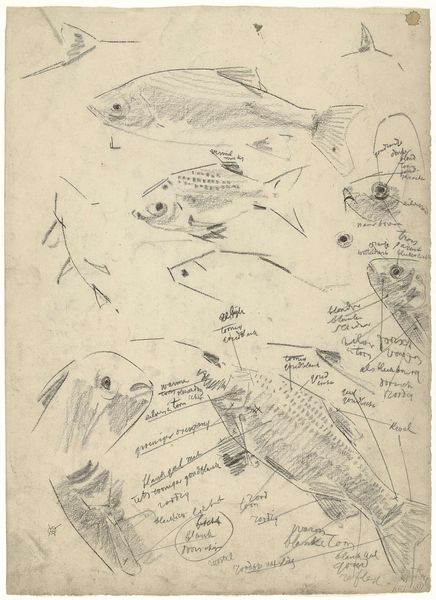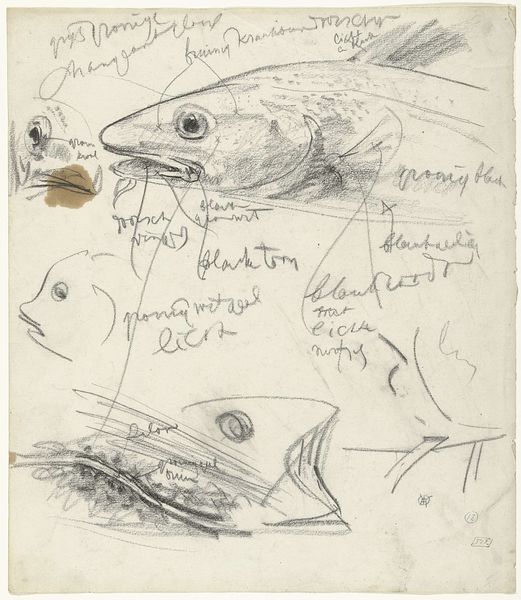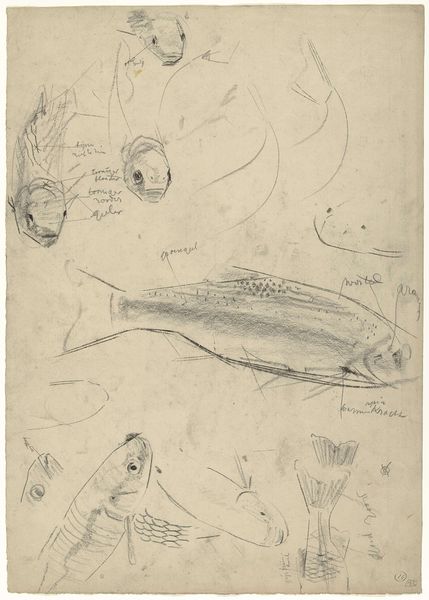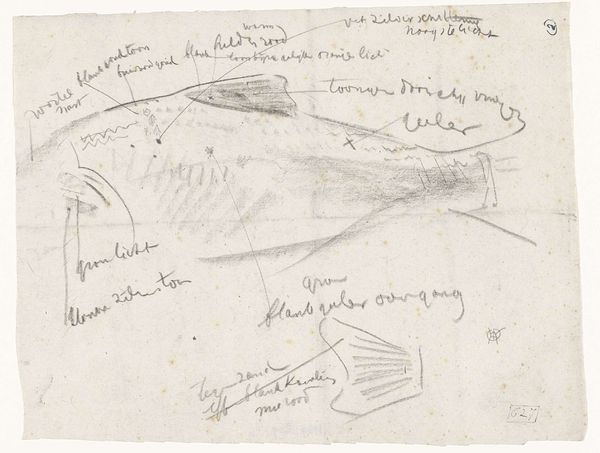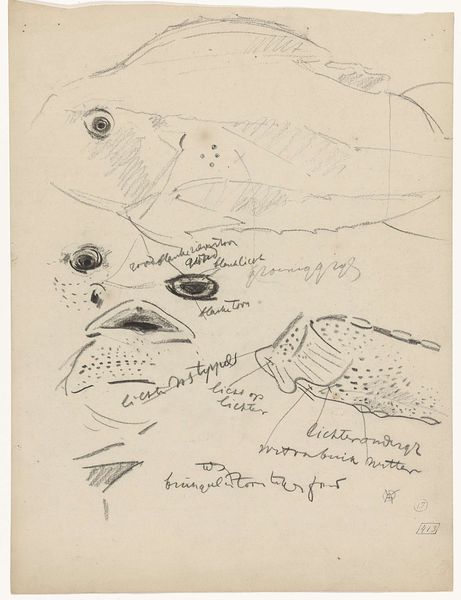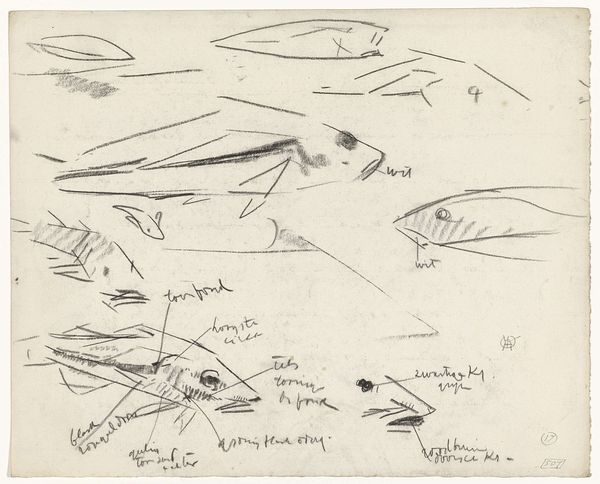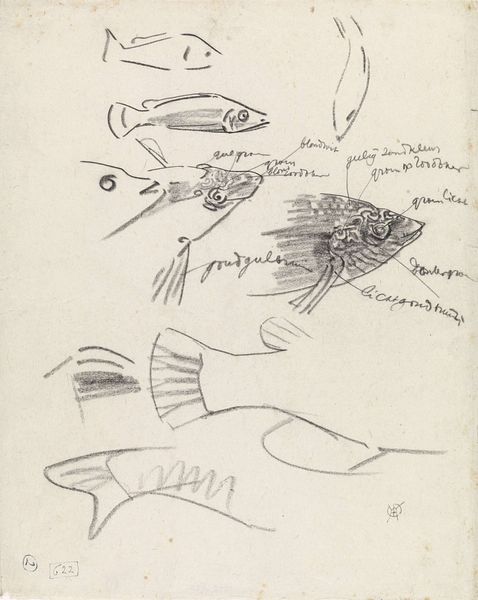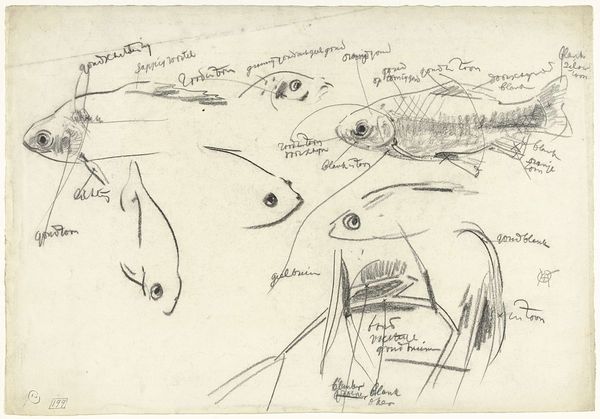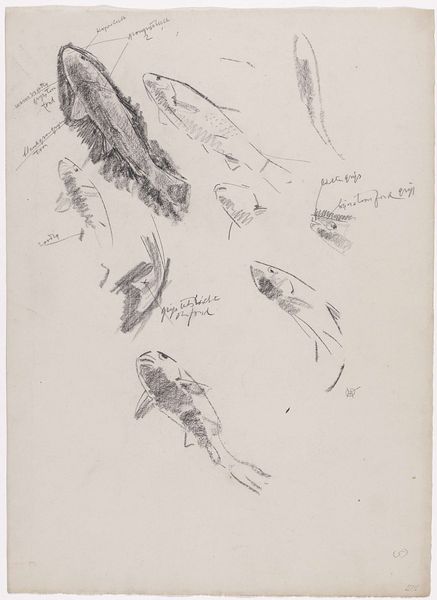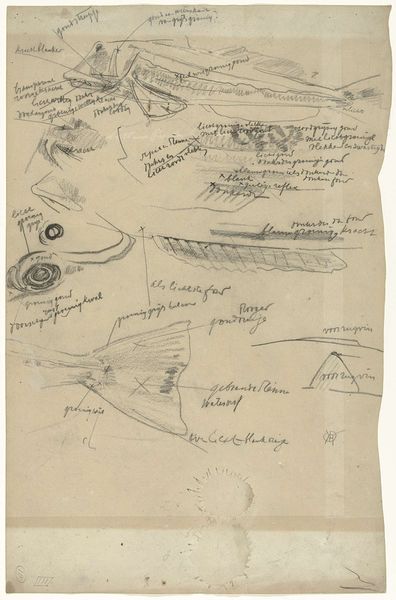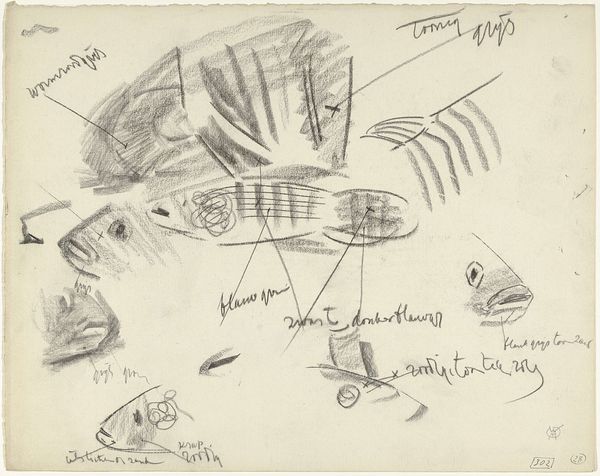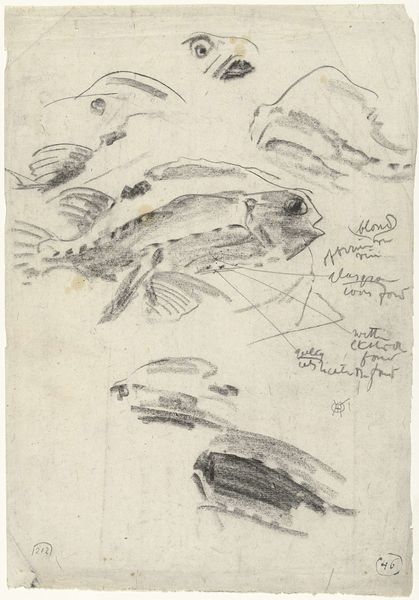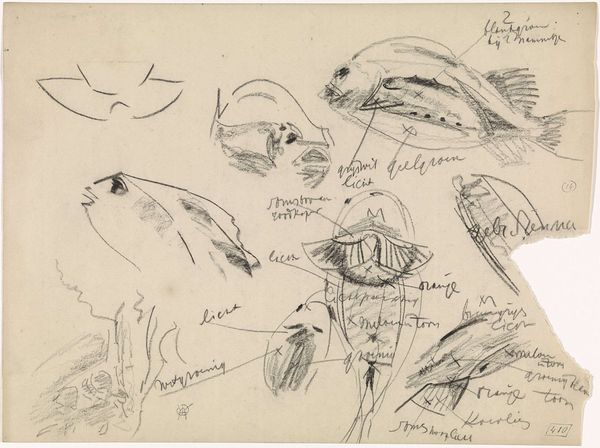
drawing, paper, graphite
#
drawing
#
landscape
#
figuration
#
paper
#
sketch
#
graphite
#
modernism
#
realism
Dimensions: height 529 mm, width 370 mm
Copyright: Rijks Museum: Open Domain
Curator: Immediately, I am drawn to the delicate nature of this piece. It feels like a whispered observation of life. Editor: Precisely. This sheet of studies, created by Gerrit Willem Dijsselhof between 1876 and 1924, showcases his explorations of goldfish anatomy using graphite on paper. It's currently housed here at the Rijksmuseum. Dijsselhof’s association with both the art nouveau and Symbolist movements significantly influenced his career. I think understanding the work he was pursuing helps provide it context. Curator: Absolutely. And viewing Dijsselhof's work, and especially this seemingly straightforward sketch, through the lens of Symbolism, can reveal a commentary on the role of art in observing the natural world, but there may be further context related to a broader cultural phenomenon we might be unaware of in this era. Editor: Indeed, considering the social context—aquariums were becoming increasingly popular at the time—Dijsselhof might be participating in a wider cultural fascination. Fish, once exotic, were now subjects of domestic observation, and to that end, his decision to use sketches brings those subjects back to something far less 'perfect', more naturally organic in the best way, and perhaps commenting on both movements. Curator: That’s a wonderful point. His choices may not only question this human impulse to observe and categorize, but the fish become symbolic of constrained lives and environments. These creatures might represent an artistic commentary of societal norms themselves. Editor: I think so. Furthermore, Dijsselhof’s sketches, scattered with handwritten notes, also illustrate a methodology. Art is rarely out of reach of an intellectual tradition. Curator: Agreed. They open the work up, displaying what might usually remain behind the curtain in an artwork. The visible thought process challenges us to contemplate art as a practice embedded in a world in constant re-evaluation and discovery. Editor: A fascinating work to ponder these complex dialogues. Curator: Indeed, a lot is caught in these strokes of the pencil on paper.
Comments
No comments
Be the first to comment and join the conversation on the ultimate creative platform.

